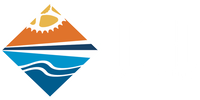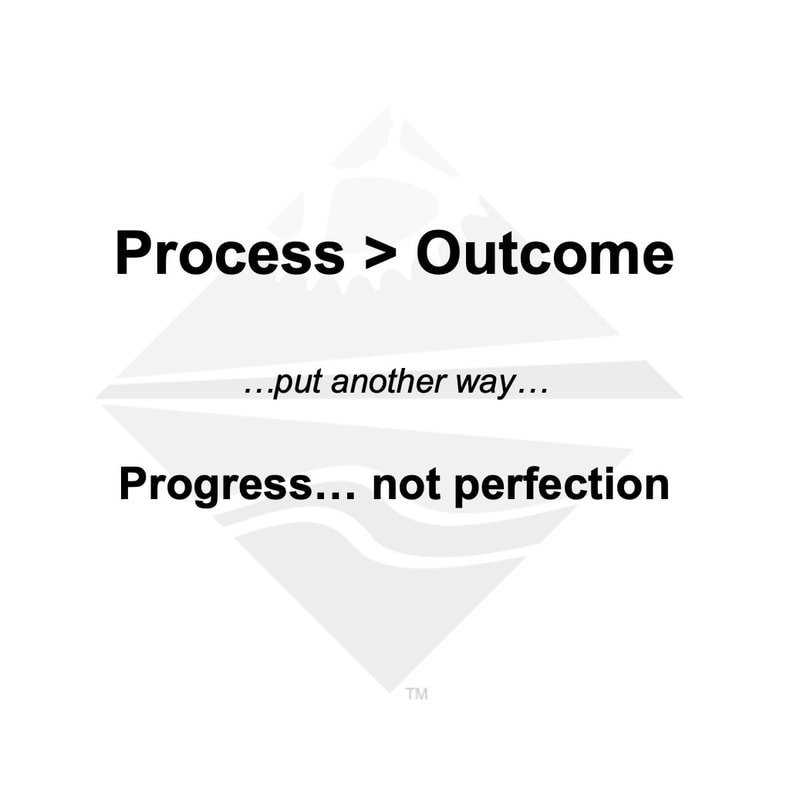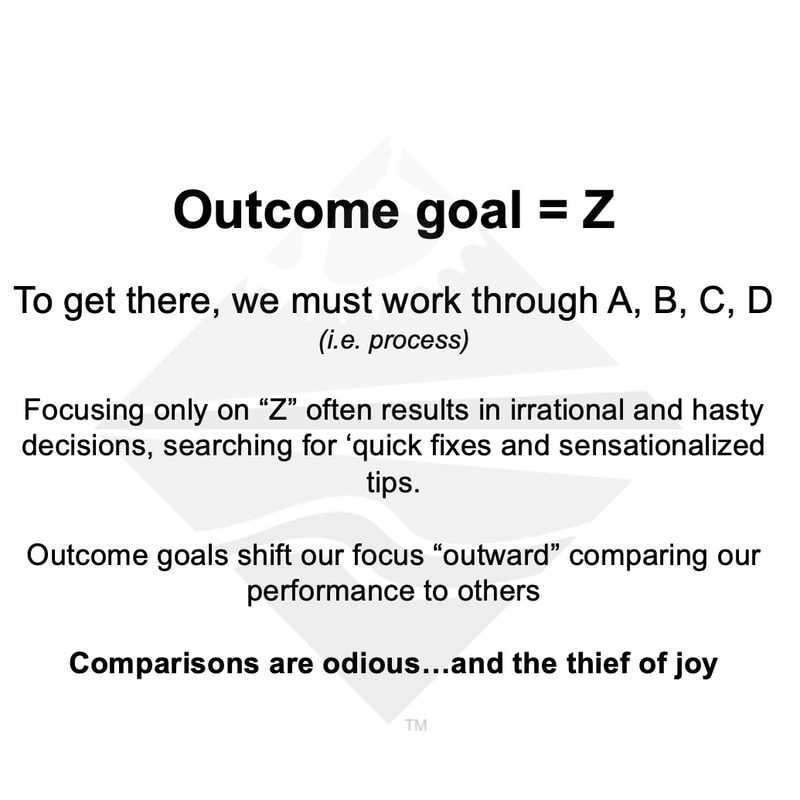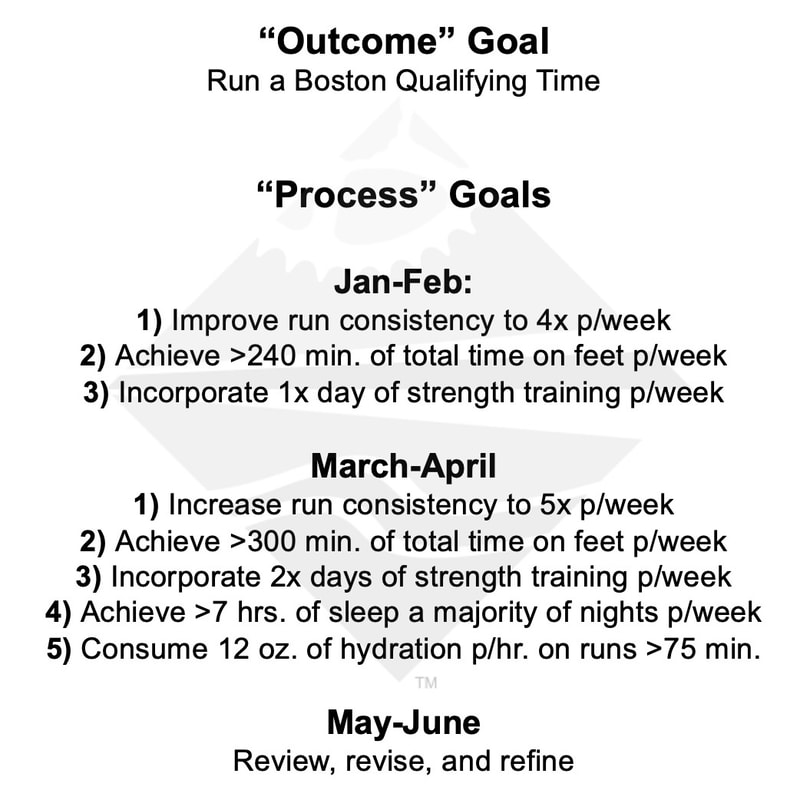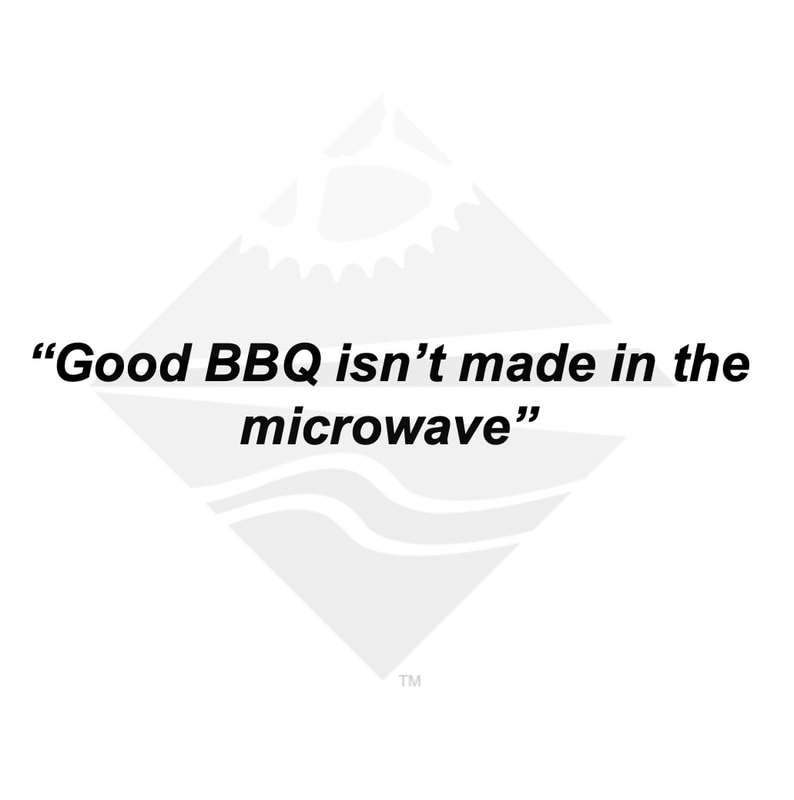|
Originally written for the Nov/Dec OutThere Outdoors publication - learn more by visiting their website: outthereoutdoors.com/health-fitness/ Spend any length of time viewing and consuming print, digital, or social media and it won’t be long before you’re being bombarded with numerous life-changing and self-help schemes – “Unlock Your Day with 10 Morning Rituals” – “Bulletproof Your Mind in 3 Simple Steps” – “The Beginners Guide to Ice Bath Immersion.” The list of alluring titles is endless, all with the same promise of optimal health and well-being. With an emerging industry of biohackers and influencers all seemingly focused on ‘optimization’ it is a daunting task to discern fact from fiction. Instead of offering clarity and simplicity many are instead left confused and frustrated. And while the list of modifiable health and wellness factors is long (e.g. consider improved sleep habits, regular physical activity, adequate hydration and nutrition timing, and nurturing connections and relationships…) perhaps none are as effortless or capable of immediate impact as the art of purposeful breathing. Now before we go any further, let’s practice something. Since you've undoubtedly found a comfortable place to read the latest edition of Out There Outdoors, paired with your favorite warm fall beverage (I’ll take a cider, please) you're all set. So, let's get started. 1) After closing your mouth and relaxing your body, exhale all the air from your lungs. 2) Inhale slowly through your nose over four counts. 3) Hold your breath for four counts. 4) Now exhale slowly through your nose over four counts. 5) Finally, hold your breath for four counts.
With the aim of optimizing the nervous system and alleviating stress, researchers have identified an additional technique known as respiratory sinus arrhythmia. To begin, inhale calmly and then forcefully exhale. Repeat this alternating pattern for 15-25 breaths. At the end, hold your breath for 15 seconds while focusing on calming both your mind and body. It is not uncommon to experience a feeling of unease or even a sense of anxiety when first practicing this technique. However, success is still attainable by starting with fewer initial breaths and by shortening the hold at the end.
Now, I won’t go so far as to promise a complete transformation of your overall well-being by incorporating “The Single Best Breathing Technique for Optimal Health” into your daily routine (as catchy as it may seem). Nevertheless, taking a few moments to engage in mindful breathing – whether while confined to the office, the workplace, the classroom or while enjoying the last fall hike before trading hiking boots for snowshoes – may be one of the easiest ways to positively impact your mood, performance, and overall well-being. //
0 Comments
Supplement to Out There Outdoors May/June ArticleEveryone wants to live on top of the mountain, but all the happiness and growth occurs while you are climbing it. - Andy Rooney
Pre-hike checklist: hiking boots and wool socks, favorite trekking poles, 10 essentials, light-weight pack, pocketknife, camera (and many more…) While there may be other preferred odds and ends to include alongside your favorite gear, you're ready to hit the trails, right?
While these essentials are needed for comfort and safety, an often-overlooked 'essential' aspect of hiking and backcountry navigation is ensuring your capacity (i.e. physical fitness) is a good fit for the demands of the trail. The following 'top-10' activities and exercises will ensure you are improving your endurance, balance, strength, and overall capacity, improving your hiking tolerance and overall enjoyment while on the trail. A few items for consideration before you begin:
Top 10 Hiking Readiness Exercises (click on the video below to access the entire playlist)
DISCLAIMER:
This content is oriented to evidence, options, and thoughts regarding various performance and rehabilitation topics. Any application of this content is based on personal choice. At no time does Trexo PT & Performance retain responsibility for these choices. This information is for informational purposes only. The information contained herein will not treat or diagnose any disease, illness or ailment. Seek advice or examination by a licensed healthcare practitioner as determined by your own judgment. Trexo PT & Performance assumes no liability for the use or interpretation of any information contained herein. "I'm too slow..."
It's 5:30am - the alarm has just gone off. "Mary" quickly realizes yesterday's snow will be packed on the roads and trails resulting in slick conditions. As she musters the will power to get out of bed the reality of today's run begins to dawn on her. It is going to be slow... probably too slow to result in any meaningful training, right? So what's the point?! Are these cold and dark January runs really worth the time and effort? Perhaps you can relate to "Mary's" struggle by inserting a client of your own...or perhaps you're able to see yourself in this scenario. Undoubtedly you have been asked how 'slow' running will ever result in productive training? After all, if you want to run fast you've got to run fast, specificity of training and all that... That means these slow runs are likely making you slower! And if you are getting slower the chance of nabbing that elusive BQ (Boston Qualifier) becomes less likely! To appreciate "Mary's" mental and emotional struggle we have to acknowledge a few foundational assumptions about her training and goals.
Recognizing these influencing factors to "Mary's" training is crucial to helping answer questions, redirecting nervous energy, encouraging further reflective analysis, and reinforcing helpful training skills. Ultimately, in order to answer "Mary's" question, "Is my 'slow' run too slow for productive training" all of these domains must be recognized and leveraged. Case Application Before answering "Mary's" question, let's begin by examining a few professional and age-group athletes as it relates to training and racing paces. Using others who have accomplished a BQ (or other admirable performances) provides an excellent "case study" in structure, planning, and realistic attainment. Bart Aernouts clocked a 2:45:42 at the 2018 IM World Championships, good for a 6:12 p/mile pace across the 26.2 miles (following a 2.4 mile swim and 112 mile bike). In relation, Bart's easy, aerobic pace (i.e. 'slow running') will vacillate between a 6:54 to 8:03 p/mile pace on average, a difference of 0:42 to 1:51 p/mile pace. It is important to note that Bart's marathon came at the end of a grueling 6+ hrs. of racing rather than a stand alone effort. In contrast, Molly Seidel executed a superb stand alone marathon effort at the 2020 Toyoko Olympic Games, running 2:27:46 (5:38 p/mile pace) to capture the bronze medal after only starting to pursue the marathon distance 18 months earlier. As is easily tracked on her Strava account, Molly regularly runs 8:03-8:43 p/mile pace for her easier aerobic, warm up and cool down efforts, a difference of 2:25-3:05 p/mile pace off her PR race pace. While both Molly and Bart are professional athletes, age group athletes demonstrate a similar phenomenon. KB (client working with the author) recently completed the 2022 Chicago Marathon in a new PR of 2:53:23 (6:32 p/mile pace) qualifying for Boston and setting a new mark on a course previously run >10 times. KB's aerobic training pace averages 8:32 to 9:03 p/mile pace, a difference of 2:00-2:31 p/mile slower than their Chicago race pace. Utilizing these three case studies of professional and age-group athletes gives us a bit of an 'applied' perspective as to what Steven Seiler is discussing in his 80/20 model when he advocates that ~80% of training should be completed at or below your first ventilatory threshold (VT1 - i.e. anaerobic capacity) and ~20% close to or even above your second ventilatory threshold (VT2 - i.e. aerobic capacity). In short, by keeping your easy days easy and your hard days hard runners are better able to distribute the load and stress in a manner that fosters recovery and tissue adaptation. Too little intensity results in capacity plateau while too much intensity often results in injury and lost training consistency. Wrapping Up Returning to "Mary's" question (i.e."Is my 'slow' running too slow...") in light of these case studies should provide a bit more context and support a "No, your running is not too slow..." answer. However, "Mary's" question and sentiment is not uncommon despite significant evidence that supports a model of slower training. All too often, newer (and seasoned) runners are focused too often on steps W, X, and Y in their pursuit of Z (e.g. Z = BQ). The result is leaving behind proper execution of steps A, B, C, D and many more (e.g. A = consistency, B = recovery, C = strength and mobility training, D = proper fueling). It is easy to allow an ultimate goal of BQ to lead our daily training confidence astray, allowing our nervous energy to sway our decision making and undermine the training processes. Despite "Mary's" established habits (e.g. setting the alarm clock, clearly defining her goals) it remains easy to fall victim to doubt and disbelief. Even with a well-written training program and intentional daily habits belief in and by the runner may ebb and flow throughout the training cycle. Partnering with a coach or trusted mentor often provides the necessary catalyst for productive training by redirecting negative thought viruses, reinforcing effective training methods, and providing a steady and guiding hand to an otherwise tumultuous process. However, note the "often provides" as opposed to "always provides". While easy to dismiss, this is a crucial 'piece to the puzzle'. Not every runner who sets a goal of BQ or other lofty achievement will succeed. Ultimately, self-doubt and a negative narrative (e.g. the story told by the runner to themselves) is often more powerful and convincing. Actions shape your story! If you want to accomplish a BQ (i.e. a big, scary, audacious goal) you are going to face adversity and self-doubt. How you face it, and the story you tell yourself in the face of this adversity, will directly impact your eventual success (or failure). The story that wins is the one you rehearse. Productive training, like the marathon training noted above, is often not perfect nor is it an exact science. Rather, it is the application of scientific principles combined with a recognition of the messy and challenging, rewarding and beautiful lives of countless athletes pursuing big, scary, and audacious goals. After all, if it doesn't make you ask, "Can I do this?" have you really challenged yourself enough for growth to occur? Wishing you health, wellness, and the ability to endure within your training! Lately, many of my conversations with clients have centered around the theme of planning and preparing for 2023. The natural ebb and flow of training allows a bit of a natural rest period towards the end of the year, providing an opportunity to consider what goals will serve as a springboard to achieve outcomes in the weeks, months, and year to come.
Much of the conversations have been encouraging a consideration of “process” goals vs. “outcome” goals. At first glance, you might think this is an exercise in semantics. However, it is more of an ‘order of operations’ concept. It is darn near impossible to accomplish an ambitious goal (e.g. BQ, world-champs qualifications…) without having rightly examined the necessary steps for achievement. If you don’t spend time laying a proper foundation of consistency, adaptability, and recovery you’re unlikely to achieve the desired outcome. After all, good BBQ isn't made in the microwave... there is no hack or 'short cut' process. It takes intention, planning and patience! And while a one-size-fits-all approach is rarely the solution…addition by subtraction is a great place to start. How so? Do less! Or as Kipchoge would say, ensure you are taking a daily dose of Vitamin N (i.e. the ability to say “no” more often). The result of goal setting is the ability to establish what your highest priorities are, and in doing so… you’ve also identified what is less of a priority (addition by substraction), enabling you to unapologetically say “no” to lower priorities. “The enemy of the best is often the good.” (Steven Covey) As you look to 2023 consider what processes are in need of development and refinement, and if possible, partner with like-minded individuals who can help you achieve your goals. Having a sense of community is often a strong buffer to burnout and fatigue.  If you are like most individuals, the end of 2021 and the start of a New Year often results in intentional or unintentional periods of reflection. Maybe you’ve thought of making a resolution or goal for 2022 that is meant to address a pitfall or area that is lacking in your personal or professional life. If you’ve engaged in some form of resolution-thought for 2022 you’re not alone. In fact, yearly estimates indicate that 150-188 million American adults make resolutions at the start of each New Year. However, how many are successful, accomplishing their resolution or achieving their goal? While studies and surveys vary, a central theme is that very few adhere to their resolutions, with less than 25% committed beyond January and fewer than 8% accomplishing their intended goal by year’s end. Ultimately, from Friday (12/31/21) to Saturday (1/1/22) not much has changed. The date on a calendar is unable to control your behavior, mindset, or habits. Only YOU can do that! As our society embarks on the beginning of 2022, we all are provided an opportunity to either begin or continue a process of introspection and analysis. Before you sign up for a gym membership, register for another race, buy another pair of running shoes you likely ‘want’ more than you ‘need,’ consider unachievable resolutions (e.g. “I will achieve >8 hrs. of sleep every night”), or even swear off the post-workout burgers and beer… ask yourself 3 questions: 1) What goals do I have for 2022? Write down as many as you can think of – seriously, grab a piece of paper (or two or three), a pen and start writing. Maybe you’re excelling in some areas but find yourself struggling in others. Write down as many goals and thoughts as possible. Now…prioritize your top 3. Be incredibly discerning. For 2022 focus on only these 3 goals! You don’t need more goals – you need less. Be relentless in pursuing your goals. Do less but do it incredibly well. “You have to decide what your highest priorities are and have the courage – pleasantly, smilingly, non-apologetically, to say “no” to other things. And the way you do that is but having a bigger “yes” burning inside. The enemy of the “best” is often the “good.” – S. Covey 2) Who can I partner with to achieve my goals? If you want to go far, laying the groundwork for consistency and longevity is crucial. Partner with those who share your mindset and will help to foster your success. This involves conversations that are honest and open… but it is crucial that you first understand what your prioritized goals are. One quick note – while family and friends may be able to partner with you consider the return on investment and their likelihood of communicating honestly and openly with you throughout the year. “A coach is someone who tells you what you don’t want to hear, who ash you see what you don’t want to see, so you can be who you have always known you could be.” – T. Landry 3) Finally, why am I doing this and what’s my purpose? Think of this as your personal mission statement… your core value(s). If you don’t stop to consider your internal motivation, you’re likely to compromise your conviction and confidence within the process. “When self-esteem is hinged on performance outcomes, people struggle to maintain a façade. They pressure themselves to appear a certain way to others so they will feel good about themselves. This, of course, detracts from interest and enthusiasm. Indeed, it bolsters a false self while continuing to undermine development of true self.” – E. Deci, 1996 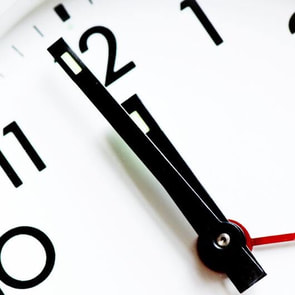 Making the time to outline and honestly answer these questions begins to align your priorities in a way that enhances balance and increases your probability of success through small, intentional changes. Undoubtedly this process will take time to accomplish, and you will be required to sacrifice your ‘wants’ to achieve your ‘needs’. It will require you to show up, to struggle, to fail, and to try again. And in the process, you may just learn that ‘success’ often requires you to go the other way round. The greatest threat to your potential success in 2022 is not potential failure, but rather the resulting paralysis that limits your ability to learn and grow. When 11:59pm on 12/31/21 becomes 12:00am on 1/1/22 very little will have changed. Behavior, mindset, and habit change takes time. If it could be done quickly undoubtedly more people would do it with success. In contrast, the expanse of time from 12/31/21 to 12/31/22 provides ample opportunity. What will you do with your time? |
AuthorJoel Sattgast is a physical therapist, performance coach, assistant professor of physical therapy, a Dad, husband, and an athlete. All posts are related to evidence, opinions and thoughts regarding various performance and rehabilitation topics. |
